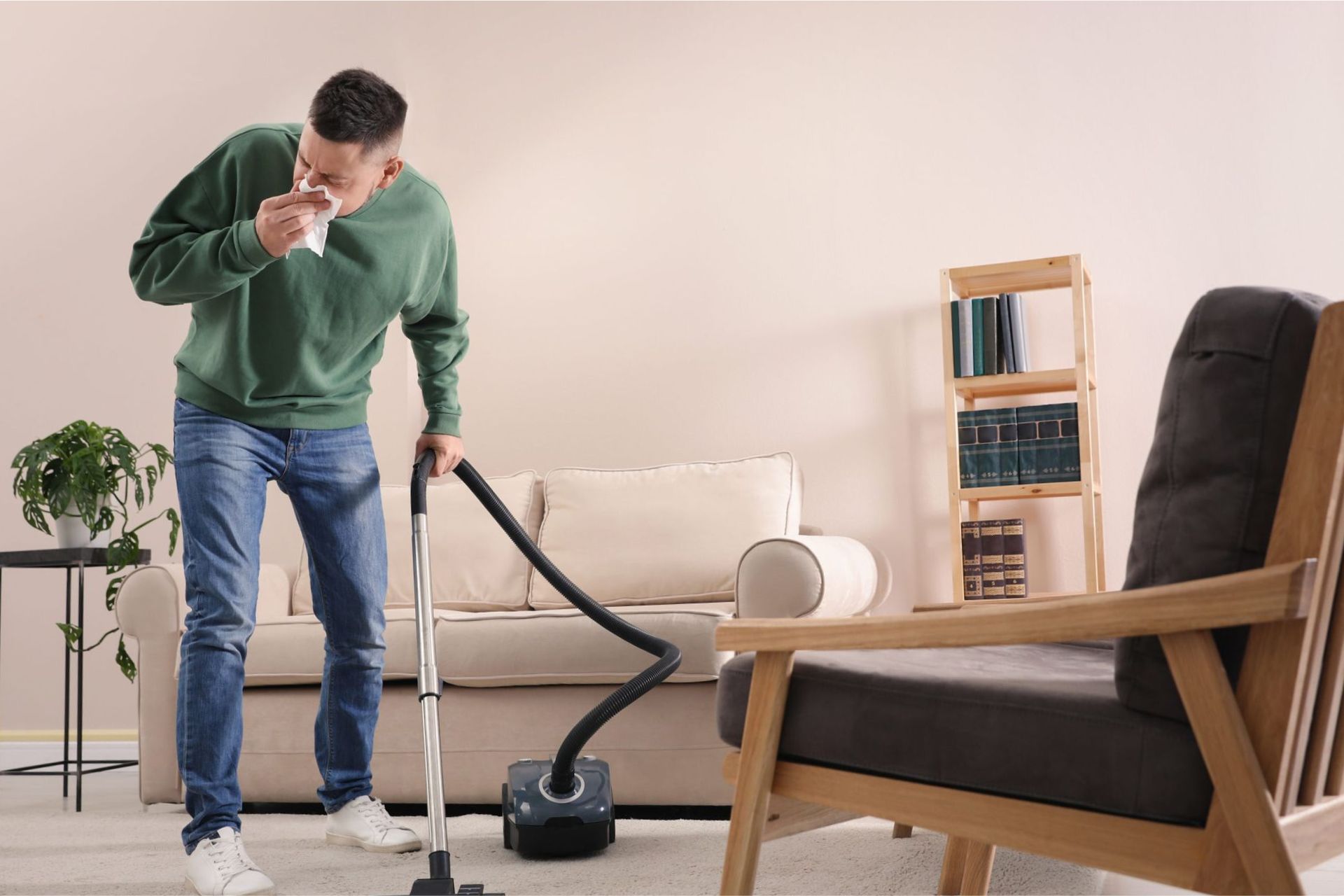Introduction: How to Vacuum When You Have Allergies?
For people with asthma or seasonal sensitivities, the question “How to vacuum when you have allergies?” is more than just about cleaning—it’s about health. Dust mites, pollen, pet dander, and mold spores are hidden in carpets, upholstery, and even on hard floors. If not vacuumed properly, these allergens can trigger sneezing, congestion, itchy eyes, or breathing issues.
The good news? With the right vacuum, technique, and routine, you can dramatically reduce allergens in your home. In this guide, we’ll cover everything you need to know about vacuuming safely and effectively when living with allergies.

Why Allergies and Vacuuming Are Connected
Understanding why vacuuming matters helps answer the main question: How to vacuum when you have allergies?
- Dust and debris naturally settle into carpets, rugs, and upholstery.
- Allergens such as pollen and pet dander cling to fabrics and surfaces.
- Vacuuming stirs particles into the air if your machine lacks proper filtration.
This is why choosing the right vacuum and following allergy-friendly methods are crucial for a cleaner, healthier living space.
Choosing the Right Vacuum: How to Vacuum When You Have Allergies
The first step in learning how to vacuum when you have allergies is selecting the right machine. Here are features to look for:
HEPA Filters
- High-Efficiency Particulate Air (HEPA) filters capture 99.97% of particles as small as 0.3 microns.
- Essential for trapping allergens like pollen and dust mites.
Sealed Systems
- Prevents allergens from leaking back into the air.
- A sealed vacuum ensures all air passes through the filter.
Bagged vs. Bagless
- Bagged vacuums: Better for allergy sufferers since bags trap allergens.
- Bagless vacuums: Require frequent emptying, which can release allergens back into the air.
Specialized Attachments
- Crevice tools for tight spaces.
- Upholstery brushes for couches and chairs.
- Motorized heads for deep carpet cleaning.
How to Vacuum When You Have Allergies: Step-by-Step Guide
Now let’s break down the process.
Step 1: Prepare Your Space
- Open windows slightly if outdoor pollen levels are low.
- Wear a mask to protect against airborne particles.
- Remove clutter to access all areas.
Step 2: Start with the Right Settings
- For carpets: Use a beater bar or brush roll.
- For hardwood floors: Switch to suction-only mode to avoid stirring dust.
Step 3: Vacuum Slowly and Repeatedly
- Make two to three passes over high-traffic areas.
- Vacuum in overlapping strokes to capture hidden debris.
Step 4: Use Attachments for Details
- Vacuum couches, curtains, and mattresses.
- Clean vents and baseboards, where dust accumulates.
Step 5: Empty and Maintain Properly
- If bagless, empty the bin outdoors.
- Wash or replace filters regularly.
- Replace vacuum bags before they’re too full.
Areas to Focus On When You Have Allergies
Learning how to vacuum when you have allergies means knowing where allergens hide:
- Carpets and Rugs – Trap dust mites, pollen, and pet hair.
- Upholstery – Holds allergens in fibers and cushions.
- Mattresses and Bedding – A common spot for dust mites.
- Curtains and Blinds – Collect dust and pollen.
- Hard Floors – Dust settles quickly, so vacuum regularly.
How Often Should You Vacuum with Allergies?
Frequency is just as important as technique.
- Daily: If you have pets or live in a high-pollen area.
- 2–3 times a week: For moderate allergies.
- Weekly: For low allergy sensitivity or in less-used rooms.
👉 Remember, vacuuming frequently is one of the most effective ways to keep allergen levels low.
Common Mistakes to Avoid When Vacuuming with Allergies
Even with the right vacuum, mistakes can worsen allergy symptoms.
- Vacuuming too fast: Misses allergens buried deep in fibers.
- Skipping filters: Not cleaning or replacing them reduces efficiency.
- Using old or leaky vacuums: Can blow allergens back into the room.
- Emptying bins indoors: Releases allergens back into the air.
Additional Allergy-Reducing Cleaning Tips
Besides vacuuming, combine these practices for better allergy control:
- Wash bedding in hot water weekly.
- Use doormats to trap pollen before it enters your home.
- Keep pets off furniture if possible.
- Run an air purifier with a HEPA filter.
- Dust with damp cloths to prevent particles from spreading.
FAQs: How to Vacuum When You Have Allergies?
- What is the best vacuum for allergies?
A vacuum with a HEPA filter, sealed system, and bagged design. - Should I vacuum daily if I have allergies?
Yes, especially in high-traffic areas or if you have pets. - Can vacuuming make allergies worse?
Yes, if your vacuum lacks proper filtration or leaks allergens back into the air. - Is it better to vacuum with or without a bag for allergies?
Bagged vacuums are better since they trap allergens more effectively. - Should I wear a mask while vacuuming with allergies?
Yes, it helps reduce exposure to airborne particles stirred up during cleaning.
Conclusion: How to Vacuum When You Have Allergies?
So, how to vacuum when you have allergies? The key is using a vacuum with HEPA filtration, vacuuming slowly and thoroughly, and focusing on allergen-prone areas like carpets, upholstery, and bedding. Avoid common mistakes, clean your vacuum regularly, and combine vacuuming with other cleaning habits to keep allergens under control.
By following these steps, you’ll not only keep your home cleaner but also breathe easier every day.
